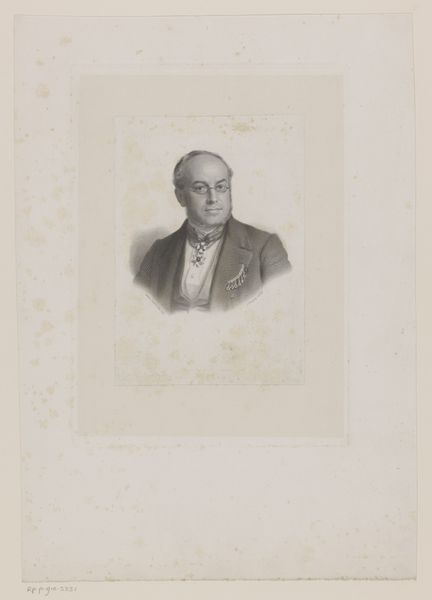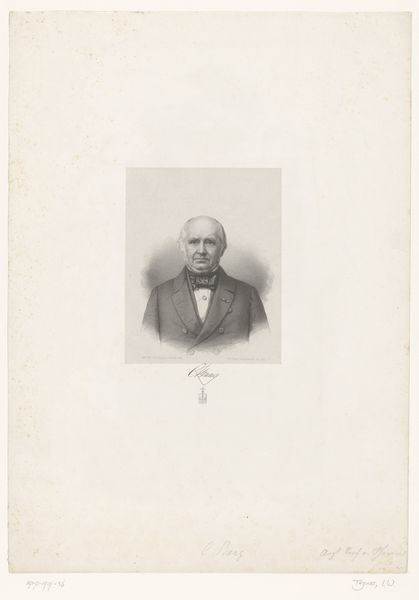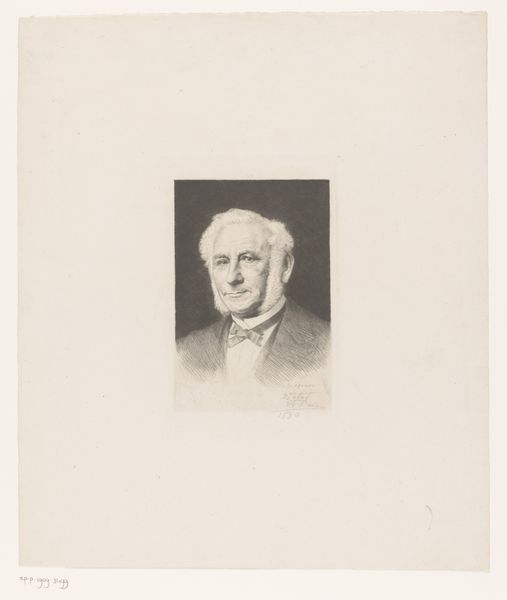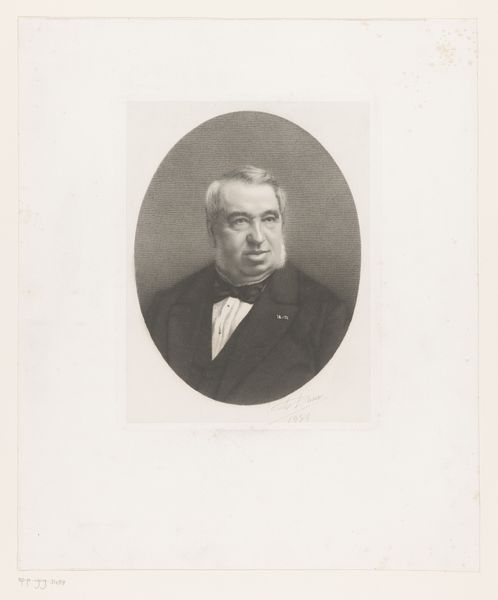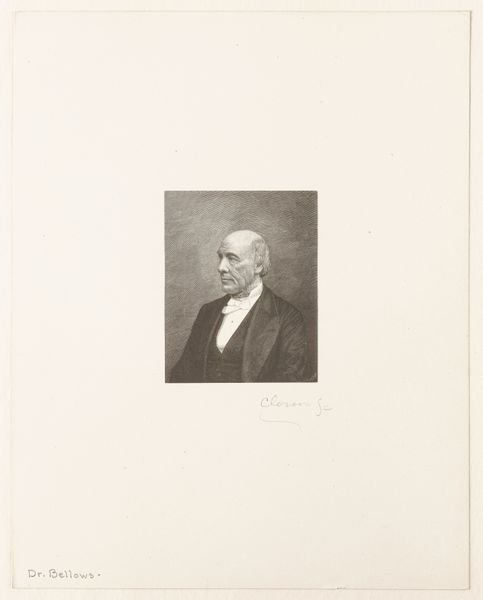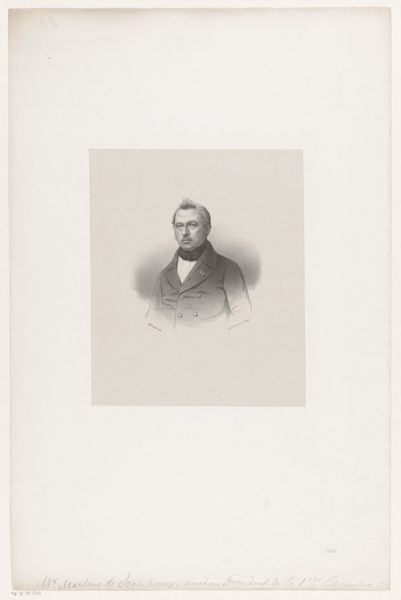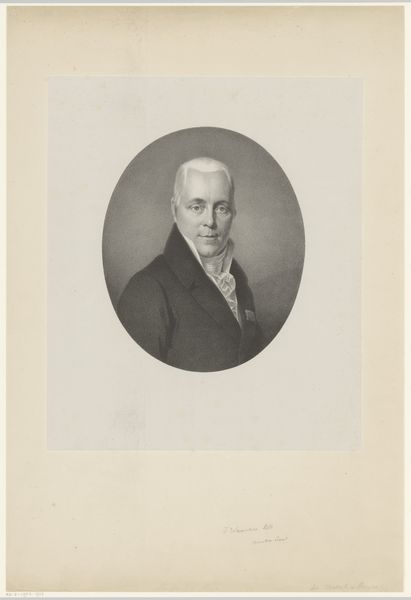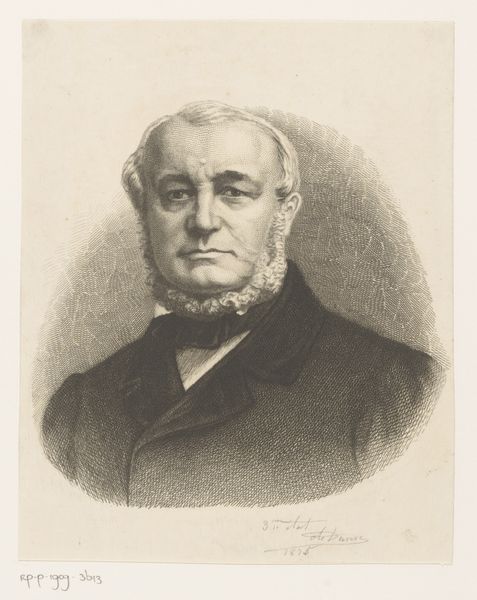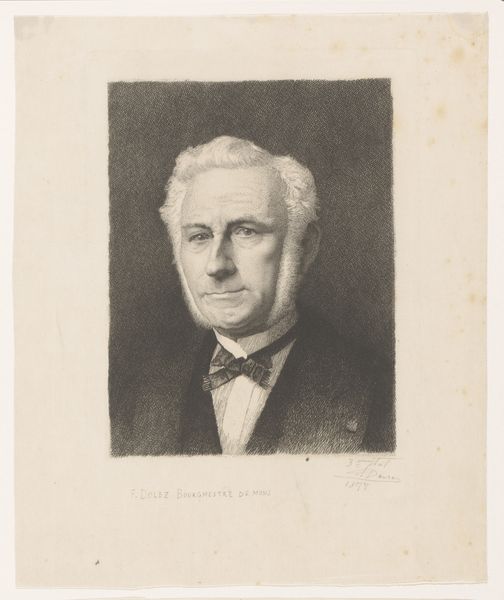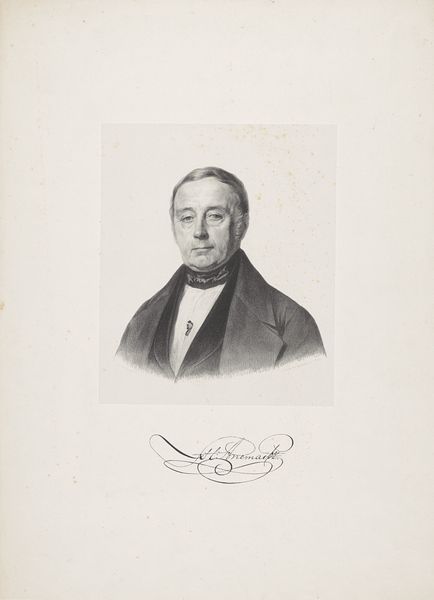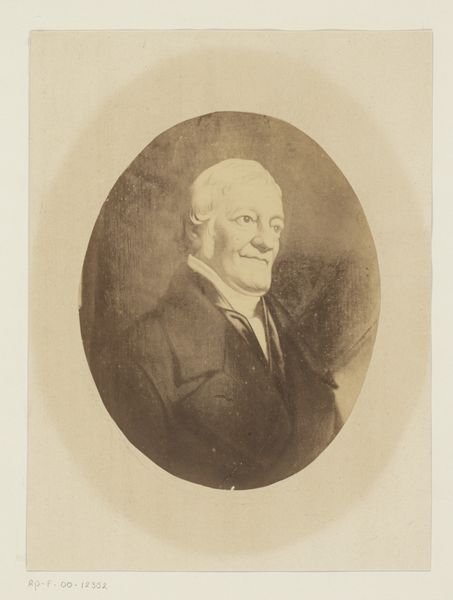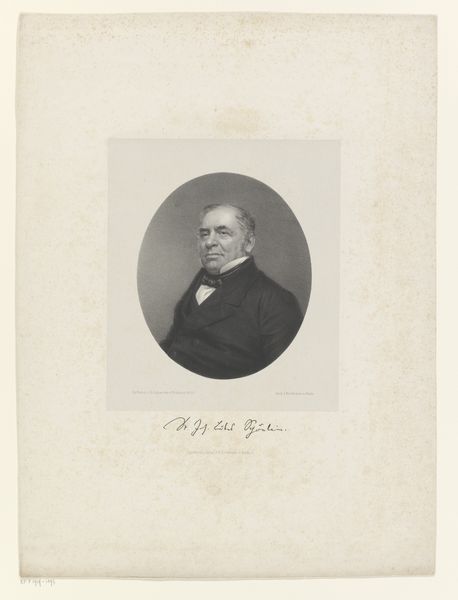
print, graphite
#
portrait
# print
#
pencil drawing
#
yellow element
#
graphite
#
realism
Dimensions: height 307 mm, width 220 mm
Copyright: Rijks Museum: Open Domain
Editor: We're looking at "Portret van B.N.J. Olin" from 1875 by Auguste Danse, it’s a print using graphite. There's something very...stately about it, and rather formal. I wonder, what does this portrait convey to you? Curator: Well, these commissioned portraits served a clear purpose in the 19th century. Before photography became widely accessible, prints like these played a crucial role in shaping public perception of individuals. Olin, whoever he was, wanted to project a particular image. What social class do you think he belonged to based on his attire and demeanor? Editor: Definitely someone of standing. That crisp white shirt, dark coat, neatly tied bow—upper class for sure. It almost feels like a propaganda piece, subtly reinforcing societal hierarchies. Curator: Precisely. These images solidified social structures. The very act of commissioning a portrait signifies wealth and a desire to be remembered a certain way. Also, think about where such prints were displayed. Often, they appeared in public spaces and private drawing rooms, reinforcing the sitter's status within the community and the family legacy. How do you think the realism movement impacts our interpretation here? Editor: Because it is "realistic", does it encourage people to perceive this print as objective truth? Curator: It presents that impression, yes, but there are choices being made. It shows an intention by the artist. Did Danse aim to truly depict Olin or something more? Editor: That’s really interesting, it changes the perspective of the artwork when one focuses on its original role in society, rather than on individual genius alone. Curator: Absolutely! Examining art through a historical lens helps reveal the power dynamics inherent in artistic creation and reception.
Comments
No comments
Be the first to comment and join the conversation on the ultimate creative platform.
